#Environmental educator
Explore tagged Tumblr posts
Text

Felt a little Ms. Frizzle this week. Gonna go get messy and make some mistakes, for science of course!
14 notes
·
View notes
Text
FIY, almost every environmental educator or naturalist is a giant nerd and is just a 10 year old kid on an adult body suit who just happens to pay taxes. They can be 70 years old and they will light up and start singing and dancing about birds, or get super giddy about how to make a fishing fly out of carpet strands and cat whiskers to catch the coolest fish, and then show you pictures of a cool amphibian they found once, and the time they got to hold a (insert wild animal during biodiversity survey, rescue, rehab, release, randomly found event). And I guarantee you, they got a gimmick or two that they do with their students and audience that just hypes then up to tenth degree and all the other fellow educators, just on honors system, always credit them for it.
How do I know?
I once worked in that world and everyone knows and still talks about my paradise bird dance, my broken wing dance, my phrase pet the moss and high five trees, playing marco polo but with specific bird calls that I taught my students so i can find them almost anywhere if they are within ear shot, my phrase of "did you bring an extra socks?" And....."POCKET SNAAAAAACKS!"
Yes...the job satisfaction is high because you get to run around and play and be goofy all the time without being considered weird. Yes there's still paperwork, bureaucracy, and people who want to make your day a living hell. But if your audience leaves knowing at least ONE new thing, you've won.
I think the only person I've met in real life with 100% career satisfaction was this gal I knew who was a presenter at a children's science museum and delivered every line like she was running a WWE match. Every time you passed the room where she was giving a presentation, you'd hear something like "WHO'S READY FOR CEPHALOPODS?!?" and the kids would go absolutely nuts cheering.
#natural science#natural science educators#educators#museum#environmental educator#naturalist#job satisfaction#the pay could be better though#if it was i wouldnt have left
135K notes
·
View notes
Text
youtube
Watch the 2024 American Climate Leadership Awards for High School Students now: https://youtu.be/5C-bb9PoRLc
The recording is now available on ecoAmerica's YouTube channel for viewers to be inspired by student climate leaders! Join Aishah-Nyeta Brown & Jerome Foster II and be inspired by student climate leaders as we recognize the High School Student finalists. Watch now to find out which student received the $25,000 grand prize and top recognition!
#ACLA24#ACLA24HighSchoolStudents#youtube#youtube video#climate leaders#climate solutions#climate action#climate and environment#climate#climate change#climate and health#climate blog#climate justice#climate news#weather and climate#environmental news#environment#environmental awareness#environment and health#environmental#environmental issues#environmental education#environmental justice#environmental protection#environmental health#high school students#high school#youth#youth of america#school
24K notes
·
View notes
Text
Kenosha Outdoor Adventures!
On a recent trip to Kenosha, Wisconsin for my friend Annie Jansen and I, it was all about Kenosha outdoor adventures! I love the opportunity to get close to art and nature! During our stay, we had amazing dining and lodging experiences. We stayed at the beautiful and perfectly located Captain’s Quarters next door and above Captain Mike’s, a great burger bar! The Airbnb is in the center of the…
#adventure#airbnb#airplane crash#Anna&039;s on the Lake#art#axe throwing#battlegrounds#Big Bopper#Boundless Adventures#Bristol Woods Park#Buddy Holly#camp#Captain Bart Mengo#Captain&039;s Quarters#Catain Mike&039;s#Chris Simond#dining#Elizabeth Alvery#environmental educator#family oriented#Fanny Pringle#flower garden#flowers#free nation#garden#go beyond#Great Lakes#Hawthorne Hollow#hiked#Hyslop Foundation
0 notes
Text











You guys wanna see a science Lego set? Well, here's Lego DNA!
With a scientifically accurate DNA model, and a historically accurate lab + 5 scientists!
Aims: to promote science to kids and honor Rosalind Franklin.
Less than 4,000 votes needed to get it considered as a real official Lego set to be sold worldwide!
If you like it, please support here and share with your friends: https://ideas.lego.com/projects/c92cd95b-49e7-46ec-b844-ac6482c51139
#chemistry#science#biology#design#diy#education#nature#environmental science#molecular biology#stem#women in stem#research#laboratory#women scientists#school#university#college#students#learning#lego art#lego photography#afol#lego sets#lego ideas#lego builds#lego moc#rosalind franklin#james watson#francis crick#university student
2K notes
·
View notes
Text
the thing is there's like, a point of oversaturation for everything, and it's why so many things get dropped after a few minutes. and we act like millennials or gen z kids "have short attention spans" but... that's not quite it. it's more like - we did like it. you just ruined it.
capitalism sees product A having moderate success, and then everything has to come out with their "own version" of product A (which is often exactly the same). and they dump extreme amounts of money and environmental waste into each horrible simulacrum they trot out each season.
now it's not just tiktokkers making videos; it's that instagram and even fucking tumblr both think you want live feeds and video-first programming. and it helps them, because videos are easier to sneak native ads into. the books coming out all have to have 78 buzzwords in them for SEO, or otherwise they don't get published. they are making a live-action remake of moana. i haven't googled it, but there's probably another marvel or starwars something coming out, no matter when you're reading this post.
and we are like "hi, this clone of project A completely misses the point of the original. it is soulless and colorless and miserable." and the company nods and says "yes totally. here is a different clone, but special." and we look at clone 2 and we say "nope, this one is still flat and bad, y'all" and they're like "no, totally, we hear you," and then they make another clone but this time it's, like, a joyless prequel. and by the time they've successfully rolled out "clone 89", the market is incredibly oversaturated, and the consumer is blamed because the company isn't turning a profit.
and like - take even something digital like the tumblr "live streaming" function i just mentioned. that has to take up server space and some amount of carbon footprint; just so this brokenass blue hellsite can roll out a feature that literally none of its userbase actually wants. the thing that's the kicker here: even something that doesn't have a physical production plant still impacts the environment.
and it all just feels like it's rolling out of control because like, you watch companies pour hundreds of thousands of dollars into a remake of a remake of something nobody wants anymore and you're like, not able to afford eggs anymore. and you tell the company that really what you want is a good story about survival and they say "okay so you mean a YA white protagonist has some kind of 'spicy' love triangle" and you're like - hey man i think you're misunderstanding the point of storytelling but they've already printed 76 versions of "city of blood and magic" and "queen of diamond rule" and spent literally millions of dollars on the movie "Candy Crush Killer: Coming to Eat You".
it's like being stuck in a room with a clown that keeps telling the same joke over and over but it's worse every time. and that would be fine but he keeps fucking charging you 6.99. and you keep being like "no, i know it made me laugh the first time, but that's because it was different and new" and the clown is just aggressively sitting there saying "well! plenty of people like my jokes! the reason you're bored of this is because maybe there's something wrong with you!"
#this was much longer i had to cut it down for legibility#but i do want to say i am aware this post doesnt touch on human rights violations as a result of fast fashion#that is because it deserves its own post with a completely different tone#i am an environmental educator#so that's what i know the most about. it wouldn't be appropriate of me to mention off-hand the real and legitimate suffering#that people are going through#without doing my research and providing real ways to help#this is a vent post about a thing i'm watching happen; not a call to action. it would be INCREDIBLY demeaning#to all those affected by the fast fashion industry to pretend that a post like this could speak to their suffering#unfortunately one of the horrible things about latestage capitalism as an activist is that SO many things are linked to this#and i WANT to talk about all of them but it would be a book in its own right. in fact there ARE books about each level of this#and i encourage you to seek them out and read them!!! i am not an expert on that i am just a person on tumblr doing my favorite activity#(complaining)#and it's like - this is the individual versus the industry problem again right because im blaming myself#for being an expert on environmental disaster (which is fucking important) but not knowing EVERYTHING about fast fashion#i'm blaming myself for not covering the many layers of this incredibly complicated problem im pointing out#rather than being like. yeah so actually the fault here lies with the billion dollar industries actually.#my failure to be able to condense an incredibly immense problem that is BOOK-LENGTH into a single text post that i post for free#is not in ANY fucking way the same amount of harm as. you know. the ACTUAL COMPANIES doing this ACTUAL THING for ACTUAL MONEY.#anyway im gonna go donate money while i'm thinking about it. maybe you can too. we can both just agree - well i fuckin tried didn't i#which is more than their CEOs can say
15K notes
·
View notes
Text
Had two seventh graders tell me I'm good at my job today and I'm choosing to believe it was genuine A WIN IS A WIN OK
0 notes
Text
Wild vs. Feral, Domesticated vs. Tame, Native vs. Invasive, and Why Words Matter
Originally posted on my website at https://rebeccalexa.com/wild-vs-feral/
Recently a post crossed my dash on Facebook featuring a small group of llamas in the forests of the Olympic Peninsula. The caption described them as “wild” llamas (Lama glama). That may seem pretty innocuous to the average person, but to a naturalist it’s a gross mischaracterization. For one thing, llamas are completely domestic animals, no more wild than a cow or dog; they are descended from the guanaco (Lama guanacoe), which is a truly wild camelid. So this means that the llamas on the peninsula are feral, not wild. But why does the distinction of wild vs. feral matter so much?
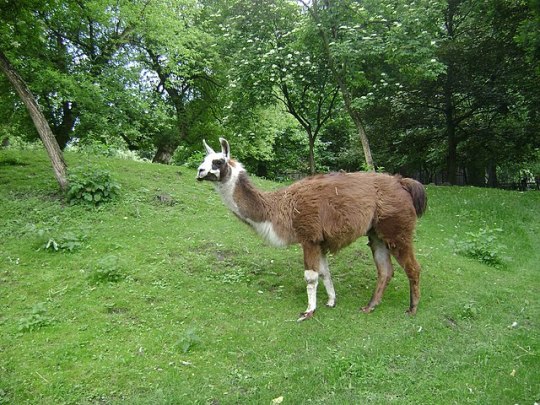
The terms we use to describe various species help us to understand their origin and, perhaps more importantly, their current ecological status. These concepts aren’t just relevant to scientists, however. Everyday people are constantly making decisions that can affect the ecosystems around them, and often these decisions are made without having a full understanding of their impact.
For example, look at how many people release unwanted pets into the wild, whether domesticated rabbits, goldfish, snakes, or other, more exotic animals. Some of these unfortunate animals end up dying pretty awful deaths due to starvation, exposure, or predation. But others manage to survive and reproduce, becoming the latest population of non-native–and potentially invasive–species in their ecosystem. This wouldn’t happen if more people understood the impact of non-native species, and how releasing captive animals puts native species at risk.
But it all starts with knowing that there’s a difference, and understanding the terms that explain why that difference exists. So let’s explore some vocabulary that can be used to describe species, whether animal, plant, or otherwise.
Let’s start with domestication, because there often seems to be confusion as to what makes a species domesticated. Domestication is a process that takes many years, often measured in centuries. Humans breed chosen animals for particular traits over a number of generations. As time passes, each subsequent generation becomes more different from the wild species it originated from, and eventually a new, fully domesticated species emerges from this process of artificial selection by humans.
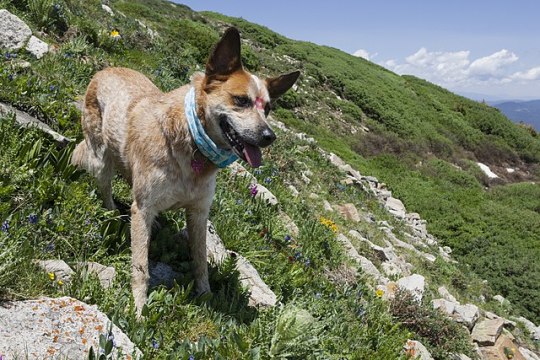
Dogs (Canis familiaris or Canis lupus familiaris) are the first animal humans domesticated in a process that started about 30,000 years ago. They evolved from the now-extinct Pleistocene wolf, a particular lineage of the gray wolf (Canis lupus), and it’s likely that the partnership began as some wolves showed less fear of humans while scavenging from our kills. By 14,000 years ago dogs were a distinct species (or subspecies) from wolves.
Dogs display very different characteristics from wolves. Their faces tend to be shorter with a more pronounced stop (the bump in the forehead where the muzzle meets the rest of the skull.) Floppy ears and curled tails are common, as are patchy-colored coats. Dogs tend to have weaker muscles than wolves of a similar size, shorter legs and smaller feet, smaller teeth, and a smaller size overall. This is a phenomenon known as neoteny, in which domesticated animals have a tendency to retain more juvenile physical traits of their parent wild species, and you can see it in domesticated animals across the board.
But it’s not just physical appearances that matter. Behaviorally dogs are generally more friendly toward humans; in fact, they’ve even developed some human-friendly body language that wolves don’t have, like “puppy dog eyes.” They can be easily trained and, unless poorly socialized, dogs generally enjoy the company of humans.
In many ways, physically and behaviorally, a dog is a wolf that never grew out of its puppy stage. While a young wolf pup may be able to live in someone’s house for a short time, as they grow older they become more destructive and less tolerant of human company. Your dog may love watching out the window during a car ride, but a wolf is going to be much more stressed out by the experience. Even wolf-dog hybrids have to be treated differently than your average domesticated dog because the wolf content has a significant effect on behavior.
This is just one example of how domestication isn’t just a matter of a few generations of selective breeding. You can also compare domesticated horses (Equus ferus caballus) with Przewalski’s horses (Equus ferus przewalskii or Equus przewalskii) or zebras (subgenus Hippotigris), domesticated cows (Bos taurus) with stories of fierce wild aurochs (Bos primigenius), and so forth. In every case the wild and domesticated counterparts are very different in both appearance and behavior.
Now, what about the term “tame”? Many wild animal species have been tamed over the years, either wild-caught individuals or those born in captivity. These tame animals may be more docile in comparison to their fully wild counterparts, but this generally takes a lot of handling and socialization from a young age. Moreover, tame animals retain a lot more wild behaviors than domesticated ones.
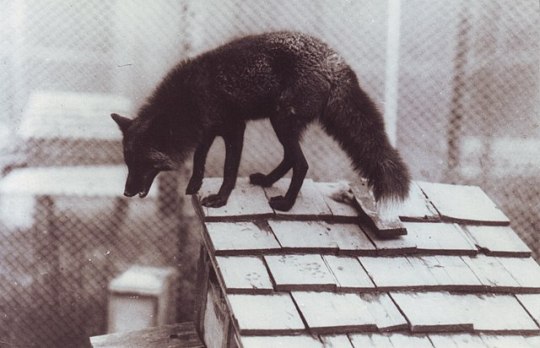
Take those supposed “domesticated” foxes that people want to have as pets. Most of the foxes available as pets have no relation to those in the famous Russian fox domestication experiment, but are from modern fur farm lines. And in fact the study foxes came from Russian fur farms, so the researchers were beginning with pre-tamed animals rather than truly wild ones. While some tame foxes may be more amenable to human handling than wild foxes, they are by no means domesticated. They are more prone to wild behaviors like urinating everywhere to mark territory, chewing on anything they can get their jaws on, nipping, and making a LOT of noise. Moreover, whereas dogs adapted to eating an omnivorous diet after millennia of eating alongside us, foxes need a more specialized diet than what you can get at a pet store.
Unfortunately there are unscrupulous people within the exotic pet trade who will advertise their tame (at best) stock as “domesticated.” This often leads consumers to thinking that they’re getting a much more tractable animal that will be as easy to care for as a cat or dog, and sets up everyone involved for disaster (except, of course, the seller with a fatter wallet.)
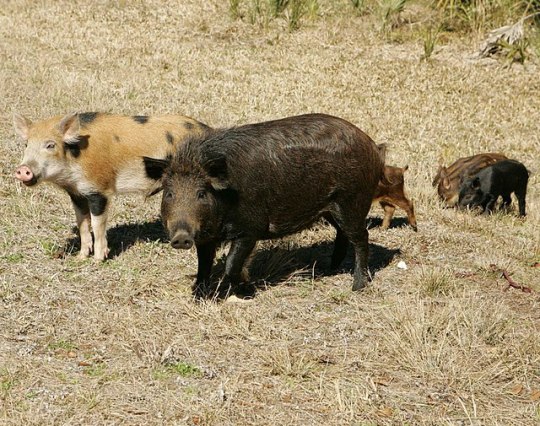
Next, let's compare wild vs. feral. A wild species is one that has never been domesticated, nor have its ancestors. Generally it will be a native species to its ecosystem, though non-native species can also be introduced to an ecosystem without ever having been domesticated. A feral animal, on the other hand, is a member of a domesticated species that has escaped or been released back into the wild and has survived to reproduce new generations that have never been handled by humans.
I’ve often heard people refer to the feral swine (Sus domesticus) that have ravaged ecosystems worldwide as “wild pigs”. They may behave in a wild manner, and they certainly look rougher and hairier than your average well-fed domesticated pig on a farm. It’s not uncommon for feral animals to regain some traits of their wild ancestors. However, that does not make them truly wild.
If you manage to wrest away a litter of newborn piglets from a feral sow and bottle-feed them, they are likely to be able to be socialized and kept in captivity, though they may still physically resemble feral pigs. They haven’t lost the deeply-ingrained genes that carry domesticated traits. However, if you try to raise a newborn Eurasian wild boar (Sus scrofa) or red river hog (Potamochoerus porcus), it will lack the domesticated traits of its farm cousins and show more wild traits as it ages, making it a rather unsuitable pet or farm animal. We also see this return to domestic traits in mustangs and other feral horses captured at a young age. While a mustang born in the wild may be tougher to work with at first than a foal born in captivity and handled from birth, the mustang will be much more calm and easier to train than, say, a zebra.
The problem with referring to feral animals as “wild” is that this suggests they are a natural part of the ecosystem they are in. Because a truly domesticated species (or subspecies) is not the same as the parent species, it has no place to which it is native as a wild animal.
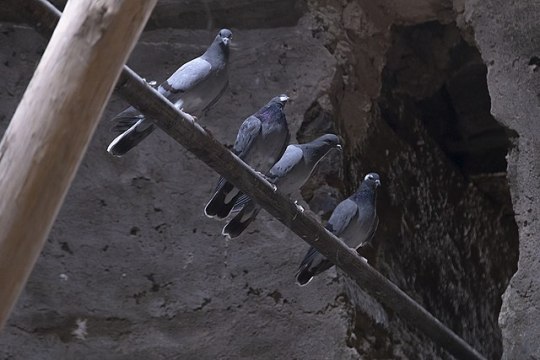
A native species is one that has evolved in a given ecosystem for thousands or even millions of years. In the process it has developed numerous intricate interrelationships with many other species in that ecosystem, creating a careful system of checks and balances. A non-native species is any species that has been taken out of the ecosystem in which it evolved and placed in a different ecosystem where it is not normally found.
For example, here in North America the mourning dove (Zenaida macroura) is a wild native species. While it may resemble domesticated pigeons, it has never been domesticated even when kept in captivity. The Eurasian collared dove (Streptopelia decaocto), on the other hand, was introduced to the Americas after a few dozen individuals were released in the Bahamas in 1974. The feral pigeon (Columba livia domestica) is a domesticated species derived from the rock dove (Columba livia), which is native to Europe, west Asia, and northern Africa. Both the collared dove and pigeon are examples of non-native species. Most non-native species do not offer any benefits to the ecosystems they are introduced to because they do not have established relationships with native species. When they compete with native species for resources, they weaken the ecosystem overall.
Non-native species can be further categorized as naturalized or invasive, or even both. A naturalized species is a non-native one that has managed to establish reproducing populations, rather than going extinct without becoming established. Unfortunately, some people take this to mean that the species has become fully integrated into the new ecosystem. However, this is a process that again takes thousands to millions of years as other species adapt to the newcomer, which itself often also changes as it adapts to its new environment.
Ring-necked pheasants (Phasianus colchicus) are an example of a naturalized species in North America. Native to Asia and parts of Europe, they were introduced here as a game bird 250 years ago. While captive pheasants are regularly released into the wild to offer more hunting opportunities to humans, this species has likely been naturalized from its first introduction.
Again, “naturalized” doesn’t mean “natural”. Pheasants compete with native birds like northern bobwhite (Colinus virginianus) and prairie chickens (Tympanuchus spp.) Not only do they compete for food, nesting sites, and other resources, but they also spread diseases to native birds. Pheasants even engage in brood parasitism, laying their eggs in native birds’ nests and sometimes causing the native birds to abandon the nest and their own young entirely.
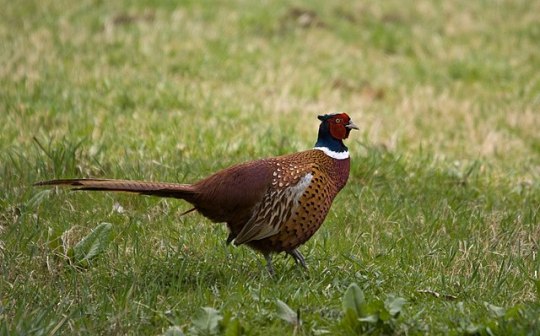
This means that the pheasants are also invasive as well as naturalized. Invasive species are non-natives that aggressively compete with, and sometimes displace or extirpate, native species. There are several hundred species that have become seriously invasive here, including both vertebrate and invertebrate animals, and numerous plants. But even the rest of the over 6000 non-native species that have become naturalized here still put pressure on native species, and have the potential to become invasive if their impact increases to a more damaging point.
Hopefully this gives you a clearer understanding of what these terms mean and why it’s important to know the difference. By knowing a little more about how your local ecosystem works and how different species may be contributing to or detracting from its overall health, you have more power to be able to make decisions that can preserve native species and help ecosystems be more resilient. Given that the removal of invasive species is one of the most important ways we can help ecosystems thrive in spite of climate change, it’s more important than ever that we increase nature literacy among the general populace. Consider this article just one small way to move that effort along.
Did you enjoy this post? Consider taking one of my online foraging and natural history classes or hiring me for a guided nature tour, checking out my other articles, or picking up a paperback or ebook I’ve written! You can even buy me a coffee here!
#wildlife#animals#nature#biology#science#scicomm#invasive species#wild animals#domesticated fox#feral hogs#long post#vocabulary#ecology#educational#biodiversity#conservation#environment#environmentalism#climate change#pigeons
2K notes
·
View notes
Text
"fuck hunters" is an uneducated statement. hunters are bigger wildlife advocates than most people, and when you make generalized statements like "fuck hunters" you are clearly referring to either a) the hunters you knew who bragged about not following the laws or b) you're clutching your pearls over people who kill animals.
hunters are extremely important for our ecosystem! they keep wild populations in check, are one of the biggest funders for conservation efforts, and help promote sustainable land practices. not only is hunting beneficial for our land, it is also a tradition for many families for putting food on their tables and just for the sport and camaraderie. there will always be hunters who break the rules, but the people who follow them are the people who help sustain wildlife for everyone to enjoy.
reevaluate your beliefs if you are jumping to say "fuck hunters" when you read or hear about someone enjoying hunting. hunters are not heartless killers, most of us are people who care about animals and maintaining their natural habitats.
#ardenposting#environmentalism#hunting#conservation#wildlife management#wildlife#falconry#wildlife education
188 notes
·
View notes
Text
In my opinion, in a solarpunk future, education about the environment should be mandatory in a good school system. This is why we do this , this is why we started doing this, etc. Today I heard my Theory of Knowledge teacher say that he doesn't believe that human beings directly affect climate change. Because I study environmental science I know that's simply not true.
Studying environmental science would teach so many people that all the systems of the earth are so interconnected. For me, that made me more aware that my choices had so many widespread impacts on many areas. I wasn't so passionate about the environment before I took this subject and it has made me think differently.
Other than this, I think indigenous or cultural knowledge should also be taught along with this. I think a lot of people in the solarpunk community know that if we do want to make an impact working with indigenous people is a good method. I was reading Braiding Sweetgrass and it's so noticeable that the way we see everything is influenced by a cultural perspective.
Either way, greater education about the environment is so, so important.
#solarpunk#solarpunk education#education#ess#ib ess#international baccalaureate#ibdp#environmental science#environmental systems and societies
229 notes
·
View notes
Text

Left to right: polar bear, grizzly bear, black bear
#polar bear#polar bears#bears#mammals#wildlife#skulls#animal skulls#animal bones#vulture culture#wildlife biology#anatomy#animal anatomy#nature#naturalist#zoo animals#zoo education#environmental education#north american wildlife#north america#bear#black bears#black bear#grizzly bear#grizzlies#grizzly bears#nature photography#photography#mine#ecology#wildlife biologist
237 notes
·
View notes
Text
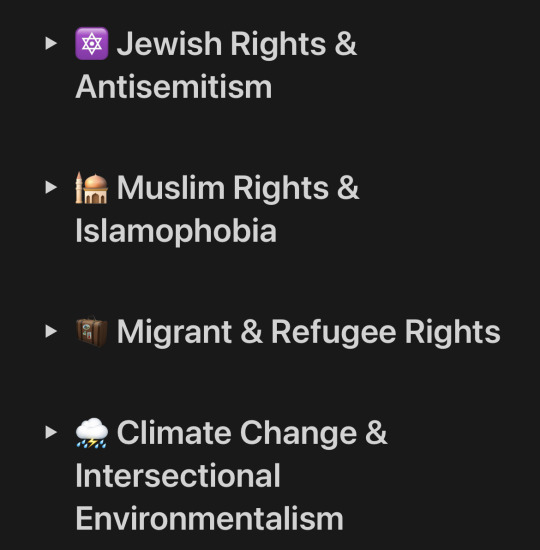


hey! as y’all know, Better Future Program is an entirely youth-run nonprofit and we provide over 3,000 FREE social justice, mental health, and academic resources. but because the majority of our volunteers are full-time students in middle school, high school, and college, we need YOUR help!
the screenshotted sections above have WAYYYY less resources than some of the others. do you think you could help us out? if you have leftist, anti-capitalist resources that align with these topics, please submit them here!
to reiterate, we are looking for leftist, anti-capitalist resources pertaining to: Jewish rights, Muslim rights, immigration, climate change, reproductive rights, classism, children’s rights, educational equity, and fat liberation
#reaux speaks#jewish#muslim#migrant rights#immigration#climate change#intersectional environmentalism#antisemitism#islamophobia#reproductive justice#reproductive health#classism#children’s rights#educational equity#fat liberation#fatphobia#body neutrality#resources
495 notes
·
View notes
Text
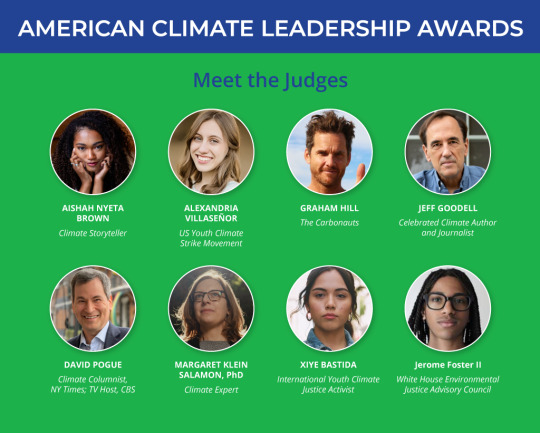
Apply or nominate: https://ecoamerica.org/american-climate-leadership-awards-2025/
Calling all organizations, individuals, and small businesses successfully engaging Americans on climate! Showcase your creativity and climate solutions by applying for @ecoamerica’s 2025 American Climate Leadership Awards. You can win $1K - $50K by submitting your efforts for consideration by a stellar line-up of judges and individuals leading on climate. It’s quick and easy to submit your application or nominate inspirational climate leaders. Apply or nominate today!
#ACLA25#ACLA25Leaders#ACLA25Youth#climate leaders#climate solutions#climate action#climate and environment#climate#climate change#climate and health#climate blog#climate justice#climate and education#climate news#weather and climate#environmental news#environment#environmental awareness#environmental education#environment and health#environmental#environmental issues#environmental impact#environmental justice#environmental protection#environmental health#high school students#high school#youth#awards
8K notes
·
View notes
Text
Just to clarify for anyone here on my blog of reblogs, shitposting, mental break downs, selfies, and occasional coherent ideas.
Im a socialist.
I think capitalism as it exists and has existed is inherently exploitive, harmful, and stupid.
So like, yeah. That’s it.
Anyways, go unions!
#trans girl#transfem#lesbian#trans lesbian#pro union#socialist#I am a socialist#socialism#fuck capitalism#labor day#pro workers#workers rights#standardized base income#free healthcare and education#environmental protection#and restoration
27 notes
·
View notes
Text
Do you wanna build a Lego science set? Here's Lego DNA!
With a scientifically accurate DNA model, and a historically accurate lab + 5 scientists!
Aims: to promote science to kids and young adults and honor Rosalind Franklin and her legacy!
3,800 votes needed (we already have 6,200!) to get it considered as a real official Lego set to be sold worldwide!
If you like it, please support via the link above or here: https://ideas.lego.com/projects/c92cd95b-49e7-46ec-b844-ac6482c51139
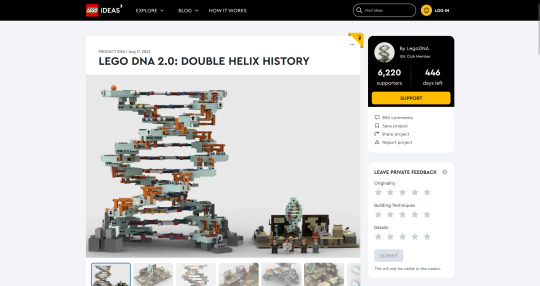

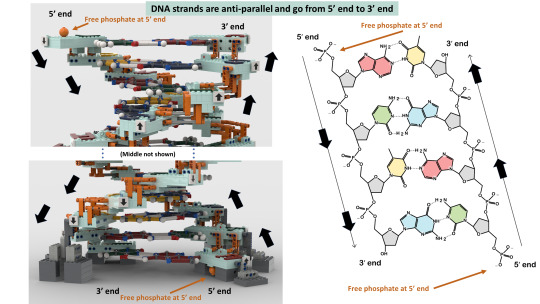






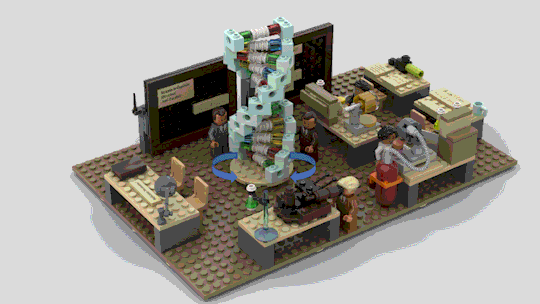
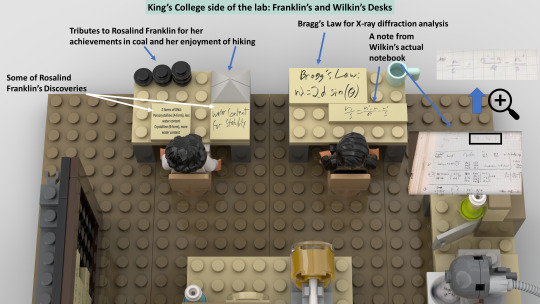


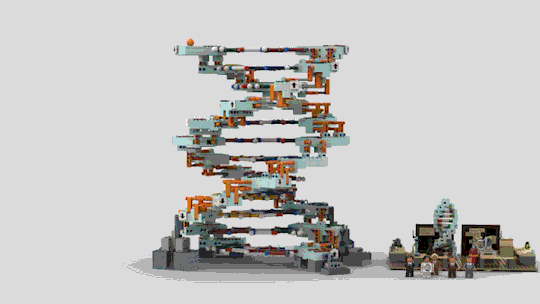
#chemistry#science#biology#design#diy#education#nature#environmental science#molecular biology#stem#women in stem#research#laboratory#women scientists#school#university#college#students#learning#lego art#lego photography#afol#lego sets#lego ideas#lego builds#lego moc#rosalind franklin#james watson#francis crick#university student
748 notes
·
View notes
Text

Chances are, if you’re reading this, you’re someone with a lot of voting power.
#activism#vote vote vote#go vote#your vote matters#free palestine#environmentalism#women’s rights#eat the rich#healthcare#queer rights#trans rights#racial justice#prison reform#immigration reform#education reform#disabled rights#russia is a terrorist state#gun control#labor unions#Letting Trump win is pro-Israel
47 notes
·
View notes